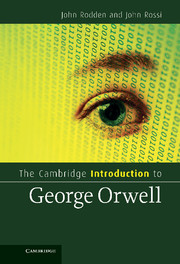Preface
Since his death in January 1950 at the age of forty-six, George Orwell’scritical and popular reputation has ascended and spread wings. Three majorbiographies were published during the last decade and Orwell’s papershave been edited in twenty volumes by the British scholar Peter Davison. Specialstudies dealing with Orwell’s career and writings appear annually.
Recognized internationally chiefly for his last two masterpieces –Animal Farm (1945), his brilliant satire on the RussianRevolution, and Nineteen Eighty-Four (1949), his grippingdystopian portrait of the future – Orwell’s other body of writingalso enjoys an appreciative audience today.
Our study examines the reasons for Orwell’s ongoing appeal. Combiningbiography with an analysis of his writings, we focus on the main literary genresin which Orwell wrote: his traditional novels, his essays, and his documentaryjournalism.
In the 1930s, Orwell struggled to write realistic fiction. Two of his novels inparticular, Burmese Days and Coming Up forAir, exhibit skillfully developed characters and descriptive passageseven as they reveal the limitations of his fictional imagination.
Orwell’s essays are among his best writing. He took a format that wasbeing swamped by belles-lettres and breathed new life into it. In his greatestessays – “A Hanging,” “Shooting an Elephant,” and“Politics and the English Language” – Orwell discovered settingsand subject matters that suited the prose style that he had developed: clear,direct, pared of artifice. By writing about topics avoided by serious authors(comic postcards, murder mysteries, and other mundane everyday things), Orwellalso helped create the genre of popular cultural studies.
